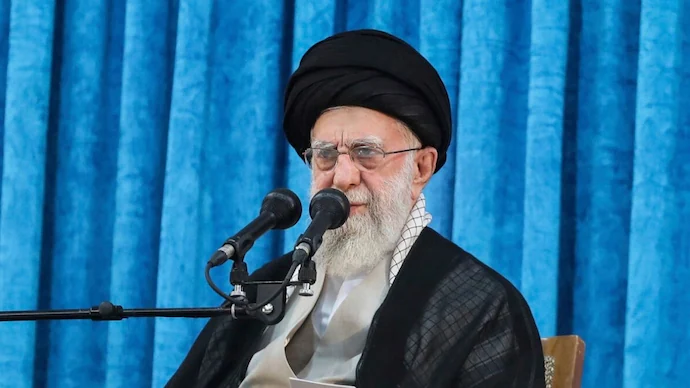In a dramatic escalation of Middle East tensions, Iran has reportedly fired its Ghadr-H missiles at Israeli targets for the first time, marking a significant turning point in the ongoing Iran-Israel conflict. This bold and unprecedented strike has not only alarmed Israel but also drawn the United States deeper into a volatile geopolitical crisis that threatens to engulf the region.
What Are Ghadr-H Missiles?
The Ghadr-H missile is a sophisticated medium-range ballistic missile, developed by Iran, capable of reaching distances of over 1,800 kilometres. Designed for high accuracy and mobility, the missile's deployment against Israel marks a major escalation and reflects Iran’s growing confidence in its military capabilities. Until now, Ghadr-class missiles were largely symbolic of Iran’s deterrent strength—but their active use suggests a shift from rhetoric to open confrontation.
First Use Against Israel: Why It Matters
The Ghadr-H missile strike on Israeli territory signals a pivotal moment in Middle Eastern warfare. While Israel has been accustomed to missile threats from Hamas and Hezbollah, the entry of precision-guided, long-range Iranian missiles into the fray introduces a new and dangerous variable. This move shatters previous assumptions that Iran would continue to operate through proxy forces rather than directly engage Israeli targets.
For Israel, this represents a national security emergency. The Iron Dome, Israel's famed missile defence system, while effective, may not be fully prepared to handle a barrage of more advanced ballistic missiles like the Ghadr-H. This raises urgent questions about Israel’s ability to maintain air superiority and protect critical infrastructure under sustained attack.
The American Response: Walking a Tightrope
The United States now finds itself in a precarious position. A staunch ally of Israel and a long-time adversary of Iran, the US is facing mounting pressure to intervene decisively. President Trump’s administration has so far exercised restraint, urging de-escalation. However, the direct use of Iranian missiles on Israeli soil may force Washington to revise its posture.
US warships in the Mediterranean have already been placed on high alert, and intelligence coordination with Israeli Defence Forces (IDF) has intensified. If the conflict escalates further, the US may be compelled to conduct targeted strikes against Iranian launch facilities, potentially drawing the entire region into a broader war.
Wider Regional Repercussions
The first use of Ghadr-H missiles also carries heavy consequences for the broader Middle East. Countries like Saudi Arabia, the UAE, and Jordan are watching nervously, fearing a ripple effect that could destabilise already fragile diplomatic balances. If Israel retaliates directly against Iran, or if the US intervenes militarily, there could be an all-out regional war involving multiple Arab states, proxy groups, and superpowers.
Moreover, oil prices have already spiked in global markets, and stock exchanges across Asia and Europe are showing signs of nervousness. The world economy, already burdened by inflation and post-pandemic recovery challenges, cannot afford another large-scale conflict in the energy-rich Gulf.
Could This Be the Start of a Larger War?
Experts are divided. Some analysts believe that this missile strike is a calculated message from Tehran—a demonstration of capability without crossing the threshold into full-scale war. Others warn that Israel may not interpret it as such and could respond with overwhelming force, particularly if civilian casualties mount.
Israel’s Defence Minister has already labelled the attack an “act of war” and hinted at retaliatory options that could include strikes deep inside Iran. Meanwhile, Iran’s Revolutionary Guard Corps (IRGC) has promised a “severe response” to any Israeli aggression. Both sides appear to be preparing for further escalations.
Global Reactions: Shock and Concern
From the UN headquarters in New York to government offices in Berlin, London, and Beijing, reactions have been swift and concerned. The United Nations has called for an emergency Security Council meeting, urging both nations to exercise “maximum restraint.” European Union leaders have called the situation “extremely dangerous” and are appealing for dialogue.
Russia and China, two countries with strong interests in the Middle East, have so far adopted a more cautious tone, calling for a negotiated settlement. However, both powers may leverage the crisis to expand their influence in a region traditionally dominated by Western powers.
Conclusion: A Defining Moment for the Middle East
The first-ever strike on Israel using Ghadr-H missiles marks a defining moment in the Middle East. It symbolises a shift from proxy warfare to direct confrontation between regional powers, and it places the world on edge. The coming days will reveal whether this act leads to measured diplomacy or full-scale war.
One thing is certain: the Iran-Israel conflict has entered a new, more dangerous phase—one with global consequences.




No comments:
Post a Comment